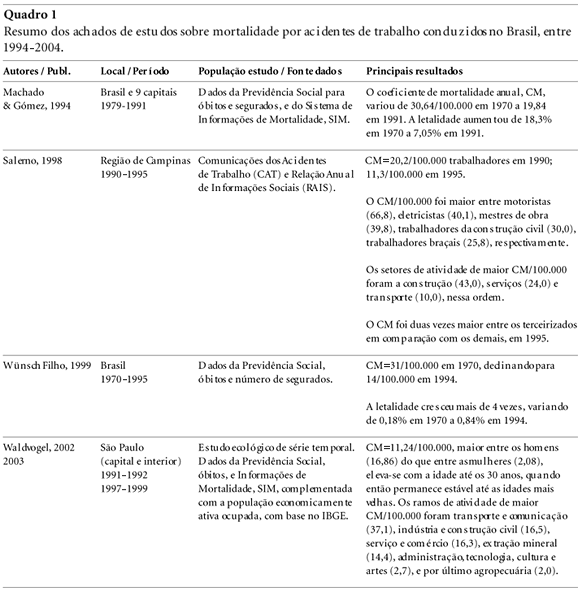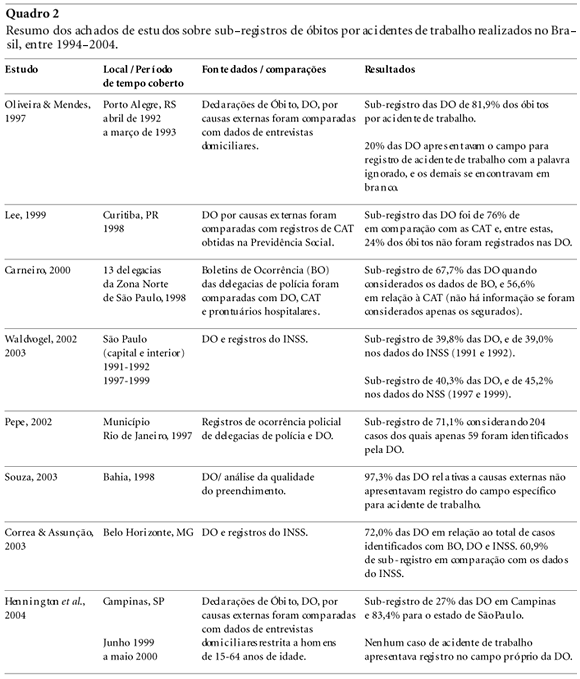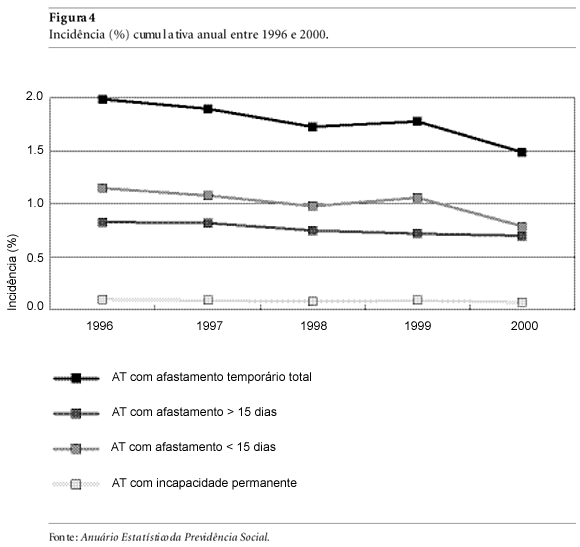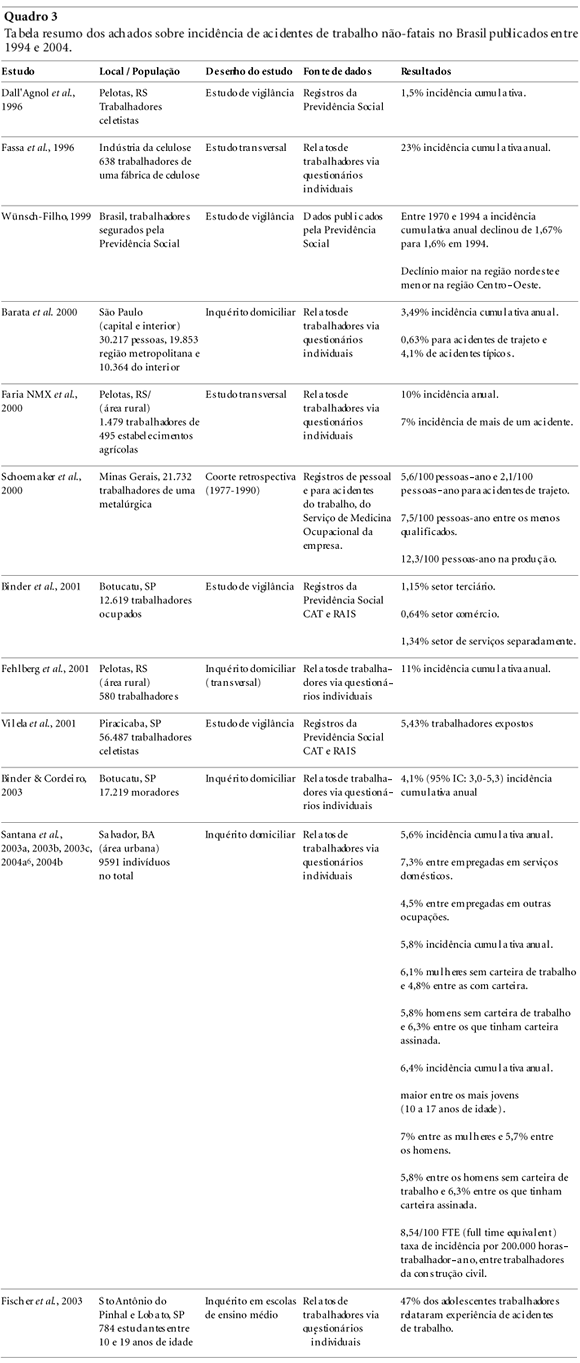This study summarizes epidemiological findings about fatal and nonfatal occupational accidents in Brazilian populations, from 1994 to 2004, period after the 2nd National Conference of Workers’ Health. The studies were identified in the Scielo and Medline, limited to full-text publications. The occupational accidents mortality is high, but from 1990 to 2003 it decreased 56.5%. However, the letality elevated from 0.18% in 1970 to 1.07% in 1999, when started to decline (0.70% in 2003). The annual cumulative incidence of nonfatal work-related accidents, CI, is also decreasing in this period, although less dramatically, particularly for those of minor severity. No temporal changes were observed for disabling occupational accidents. Community-based studies show that the CI varies from 3% to 6%. Rural workers have twice the estimated risk for those living in urban areas. Construction, paper industry, and housemaids were at increased risk for nonfatal occupational accidents. The authors pointed to the need to redefine the current policies that address workers’ protection, using the knowledge accumulated about this preventable health problem.
Occupational accidents in Brazil; Fatal occupational accidents in Brazil; Nonfatal occupational accidents in Brazil







